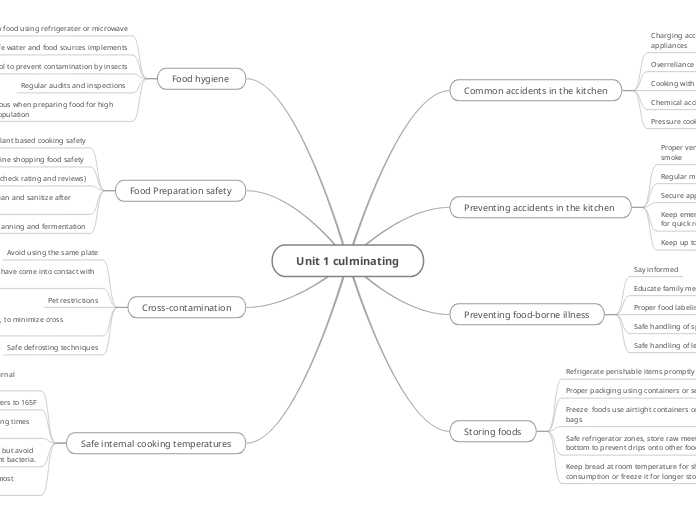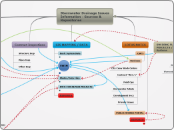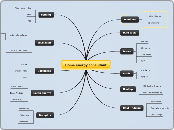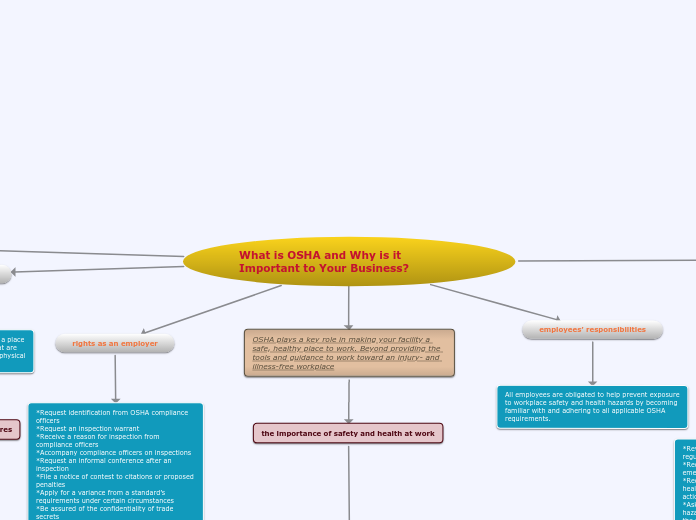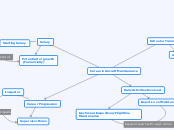av Sara Alfar 1 år siden
110
Unit 1 Culminating - Q1 2324
Proper kitchen safety involves multiple practices to ensure food hygiene and prevent contamination. Key measures include the need to minimize cross-contamination by using designated food zones and avoiding the reuse of plates that have touched raw meat.
Åpne
Unit 1 culminating Safe internal cooking temperatures Minimum safe internal temperature for most cooked food is 165F to kill bacteria Let meat warm up briefly before cooking, but avoid long room temperature periods to prevent bacteria. Follow the maker's instructions and cooking times for slow\pressure cookers Reheat food leftovers to 165F Use a food thermometer to check the internal temperature for microwave-cooked foods Cross-contamination Safe defrosting techniques Designated food zones, to minimize cross contamination Pet restrictions Discard marinade that have come into contact with raw meat, or boil them Avoid using the same plate Food Preparation safety Safe canning and fermentation Reusable grocery bags, clean and sanitize after each use Eating out safely (check rating and reviews) Online shopping food safety Plant based cooking safety Food hygiene Be extra cautious when preparing food for high kitchen risk population Regular audits and inspections Pest control to prevent contamination by insects Safe water and food sources implements Thaw food using refrigerater or microwave Storing foods Keep bread at room temperature for short term consumption or freeze it for longer storage Safe refrigerator zones, store raw meet on the bottom to prevent drips onto other food Freeze foods use airtight containers or freezer bags Proper packging using containers or sealed bags Refrigerate perishable items promptly for a 40 F. Preventing food-borne illness Safe handling of leafy greens Safe handling of sprouts Proper food labeling Educate family members Say informed Preventing accidents in the kitchen Keep up to date with the latest kitchen safety tips Keep emergency contact list posted in your ktchen for quick reference Secure appliances cords Regular maintenance in the kitchen Proper ventilation to prevent the build up of gas or smoke Common accidents in the kitchen Pressure cooker explosions Chemical accidents with cleaning supplies Cooking with cast iron Overreliance on kitchen gadgets Charging accidents with battery operated appliances
